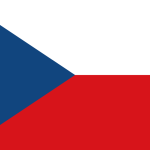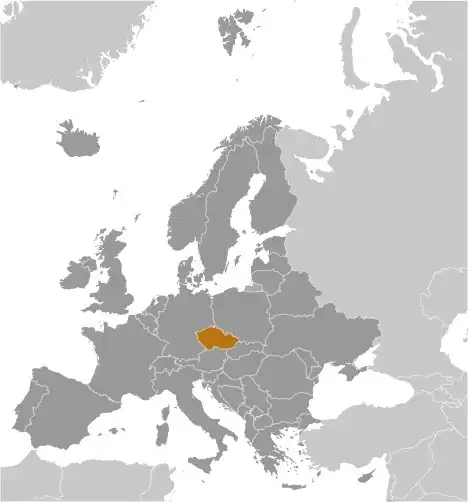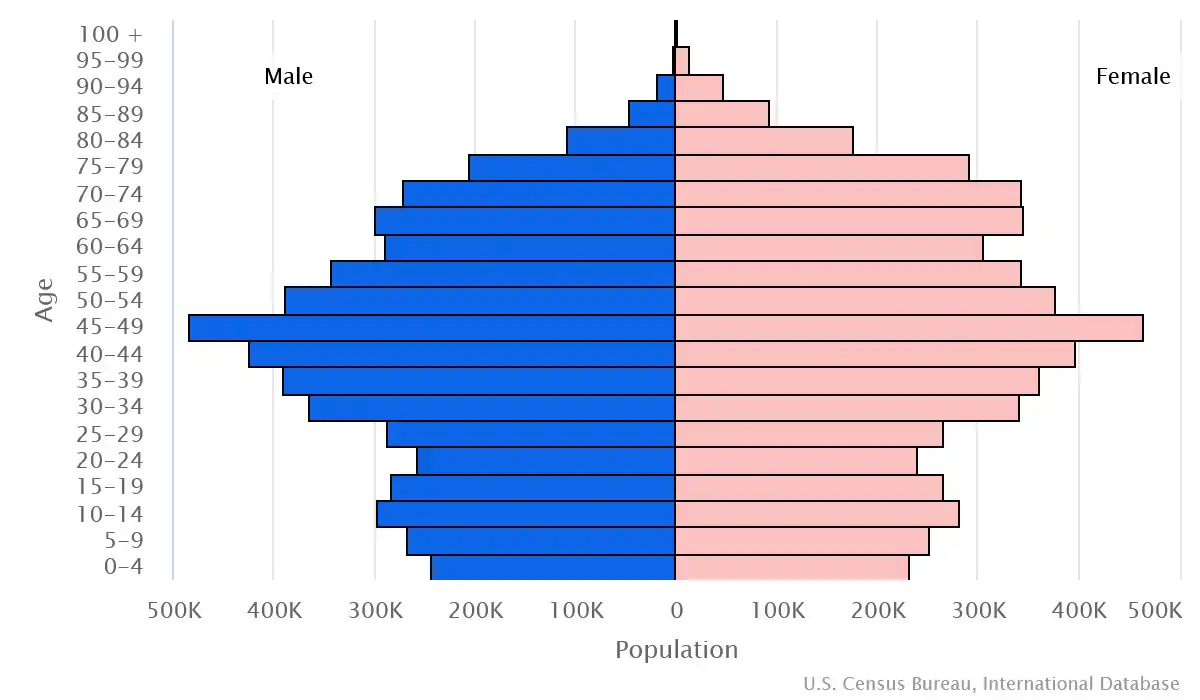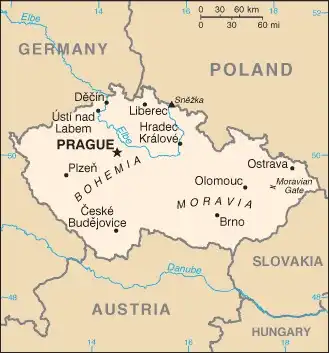
Czechia
Veröffentlicht: 18. June 2022 - Letztes Update: 28. February 2025
Country Data Dashboard

Population
10,837,890
Growth: 0.04% (2024 est.)
GDP
$343.208 billion
(2023 est.)
Area
78,867 sq km
| Government type: | parliamentary republic |
| Capital: | Prague |
| Languages: | Czech (official) 88.4%, Slovak 1.5%, other 2.6%, unspecified 7.2% (2021 est.) |
People & Society
Ethnicity (2021 est.)
Religion (2021 est.)
Age structure

Economy
Economic overview
high-income, diversified EU economy; manufacturing-oriented exporter led by automotive industry; growth stalled by inflation and energy supply disruption; business-friendly regulatory frameworks; tight labor market with low unemployment; seeking reforms to support decarbonization and improve energy efficiency
Real GDP (purchasing power parity) in Billion $
Real GDP per capita in $
Exports & Imports in billion $
Top 5 Import Partner in 2022 (57%)
Top 5 Import Commodities in 2022
- broadcasting equipment 📡
- vehicle parts/accessories 🛠️🚗
- natural gas 💨
- machine parts ⚙️
- plastic products ♻️
Top 5 Export Partner in 2022 (57%)
Top 5 Export Commodities in 2022
- cars 🚗
- vehicle parts/accessories 🛠️🚗
- broadcasting equipment 📡
- computers 💻
- plastic products ♻️
Geography
Map

Area
Natural resources
- hard coal ⚫
- soft coal ⚫
- kaolin 🪨
- clay 🧱
- graphite ✏️
- timber 🌲
- arable land 🌱
Climate
temperate; cool summers; cold, cloudy, humid winters
Historical Background Information
At the close of World War I, the Czechs and Slovaks of the former Austro-Hungarian Empire merged to form Czechoslovakia, a parliamentarian democracy. During the interwar years, having rejected a federal system, the new country's predominantly Czech leaders were frequently preoccupied with meeting the increasingly strident demands of other ethnic minorities within the republic, most notably the Slovaks, the Sudeten Germans, and the Ruthenians (Ukrainians). On the eve of World War II, Nazi Germany occupied the territory that today comprises Czechia, and Slovakia became an independent state allied with Germany. After the war, a reunited but truncated Czechoslovakia (less Ruthenia) fell within the Soviet sphere of influence when the pro-Soviet Communist party staged a coup in February 1948. In 1968, an invasion by fellow Warsaw Pact troops ended the efforts of the country's leaders to liberalize communist rule and create "socialism with a human face," ushering in a period of repression known as "normalization." The peaceful "Velvet Revolution" swept the Communist Party from power at the end of 1989 and inaugurated a return to democratic rule and a market economy. On 1 January 1993, the country underwent a nonviolent "velvet divorce" into its two national components, the Czech Republic and Slovakia. The Czech Republic joined NATO in 1999 and the European Union in 2004. The country formally added the short-form name Czechia in 2016, while also continuing to use the full form name, the Czech Republic.
